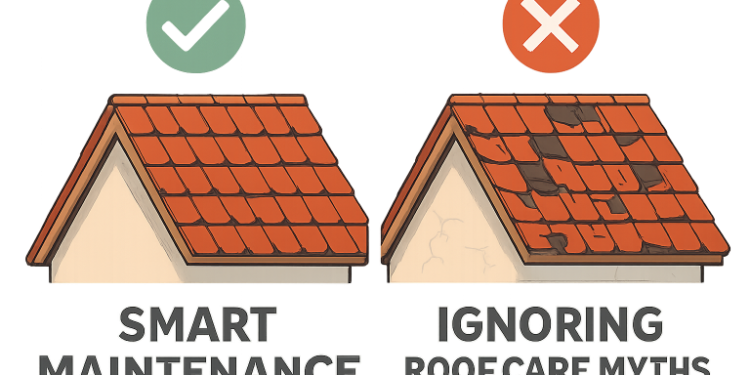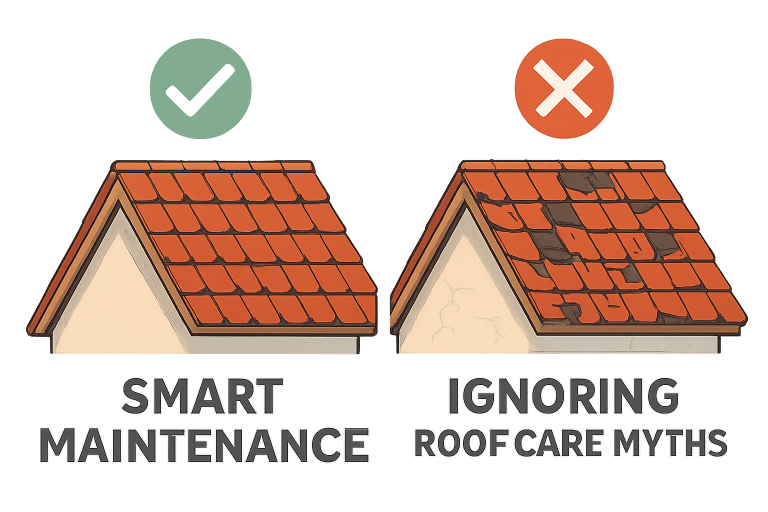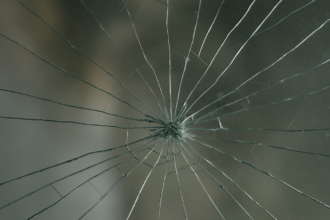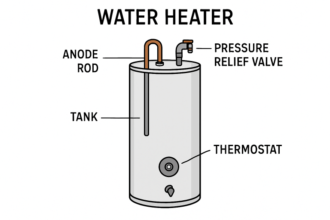Roof Repair Myths Debunked

Table of Contents
- 1 Introduction
- 2 Myth #1: All Roofing Companies Are the Same
- 3 Myth #2: You Don’t Need to Clean Your Roof
- 4 Myth #3: It Never Rains in Southern California
- 5 Myth #4: DIY Roofing Is a Cost-Effective Option
- 6 Myth #5: One Roofing Solution Fits All
- 7 Myth #6: Roof Repairs Can Wait
- 8 Myth #7: Roof Inspections Are Unnecessary
- 9 Myth #8: You Can Put New Shingles Over Old Ones
- 10 Myth #9: The Cheapest Bid Is the Best
- 11 Myth #10: My Roof Is Fine
- 12 Protect Your Roof and Your Investment
Introduction
Your roof stands as the home’s first line of defense, but when it comes to maintenance and repairs, the number of roofing myths circulating online can make it difficult to know what’s true. Ignoring sound advice or following faulty assumptions can lead to expensive mistakes and a shortened roof lifespan. One of the first steps to protecting your investment is partnering with a reputable roofing contractor who understands the region’s unique challenges and uses best industry practices. Too often, choosing the wrong guidance or cutting corners can put your roof—and your home—at risk.
This article addresses the most common misconceptions about roof care and repair so you can make informed decisions from inspection through installation. We dispel the top 10 myths holding homeowners back from smart, cost-effective roofing solutions, and highlight steps you can take to ensure your roof remains durable and reliable for years to come.
Myth #1: All Roofing Companies Are the Same
Contrary to popular belief, not all roofing professionals offer the same expertise and service. The roofing industry is filled with companies ranging from highly skilled, certified experts to inexperienced contractors. Working with a certified, established firm helps guarantee quality, complies with safety codes, and includes better material warranties. Well-trained contractors adhere to rigorous standards—a mark of trustworthiness and skill that sets them apart from the rest.
Myth #2: You Don’t Need to Clean Your Roof
Neglecting roof cleaning might look like a minor omission, but debris, moss, and algae buildup can accelerate wear and tear. Leaves and dirt can trap moisture, leading to rot, leaks, and ultimately structural damage. Frequent cleaning and careful monitoring—especially after storms—protect shingles, tiles, and underlayment, ultimately prolonging the roof’s serviceable life. According to Better Homes & Gardens, regular cleaning can ward off expensive repairs and catch issues early.
Myth #3: It Never Rains in Southern California
It is a widely held misconception that Southern California’s dry, sunny climate exempts homeowners from water-related roofing problems. In reality, heavy rainstorms, seasonal weather changes, and intense sun can lead to premature roof aging, broken tiles, or leaks. Flash flooding and wind-driven rain, although infrequent, can cause significant damage if the structure isn’t properly maintained and inspected for weaknesses.
Myth #4: DIY Roofing Is a Cost-Effective Option
The do-it-yourself spirit is admirable, but roofing is no place for cutting corners. Roof work requires expertise and the proper tools. Common DIY mistakes—such as improper nailing, poor shingle placement, or undetected water intrusion—can void manufacturer warranties or create dangerous situations. Falling from a roof is a leading cause of DIY injuries. When it comes to repairs, always call a professional with the knowledge to get it done safely and correctly.
Myth #5: One Roofing Solution Fits All
No single roofing material or solution is right for every property or climate. home’s style, budgets, local weather, and even tree coverage should inform the choices you make. While asphalt shingles are popular for their affordability, metal roofs excel in certain climates due to their durability and energy efficiency. Clay tiles are perfect for Mediterranean or Southwestern architecture, but may not be practical everywhere.
Myth #6: Roof Repairs Can Wait
Ignoring minor leaks or torn shingles is a costly gamble. Even a small breach can allow water to penetrate the underlying structure, causing wood rot, mold, and compromised insulation. Roofs don’t fix themselves; they worsen with time. Proactive repairs can save thousands in damage and keep your warranty intact. According to Consumer Reports, addressing issues promptly is one of the top ways to extend a roof’s life and protect your home.

Myth #7: Roof Inspections Are Unnecessary
Even if you don’t spot any visible damage, routine roof inspections are essential. Trained professionals can catch subtle signs of trouble—such as lifted flashing or deteriorating underlayment—that aren’t always visible from below. Annual inspections, particularly after severe weather, can prevent small problems from becoming emergencies, keeping your roof secure and extending its lifespan.
Myth #8: You Can Put New Shingles Over Old Ones
It’s technically possible to lay new shingles over older ones, but doing so often hides underlying problems. This shortcut can trap moisture, prevent proper ventilation, and void warranties. Additionally, the extra weight might stress your roof or cause future leaks. The best approach is complete removal, allowing for a thorough inspection and repair of the supporting roof deck before installing new materials.
Myth #9: The Cheapest Bid Is the Best
Choosing the lowest quote for your roofing project can seem attractive, but be wary—low bids usually mean cheap materials or inexperienced labor. Poor artistry can lead to leaks, water damage, and ultimately, higher replacement costs. Always review credentials, references, and warranty options before settling on a rooIt. It’s better to invest a bit more upfront than to pay repeatedly for subpar repairs.
Myth #10: My Roof Is Fine
Just because your roof looks intact from the outside doesn’t mean it’s in perfect condition, many issues—like water ingress, ventilation problems, or aging flashing—are invisible to the untrained eye. Regular checkups by qualified contractors ensure you’re not overlooking risks that could become major headaches down the road.
Protect Your Roof and Your Investment
Being informed is your best protection. Don’t fall victim to common roof myths or neglect proper maintenance. By working with experienced professionals and relying on facts over fiction, you’ll ensure your roof remains a trusted shield for your family, year after year.
If you have questions or suspect an issue, take action now. Regular care and smart decisions are the foundation for a safe, enduring home. For a reliable assessment and expert repairs, reach out to a qualified professional in your area.






